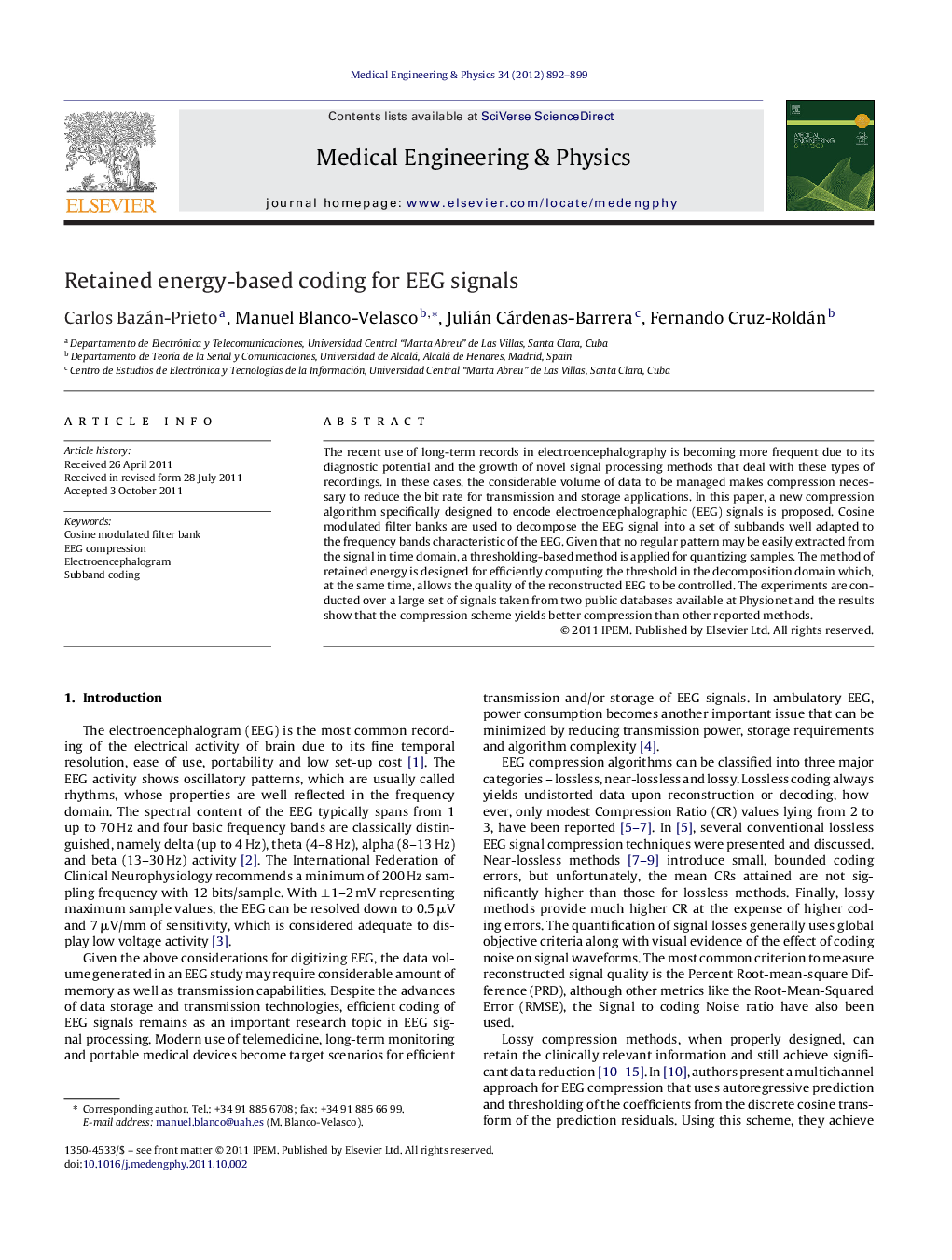| Article ID | Journal | Published Year | Pages | File Type |
|---|---|---|---|---|
| 876115 | Medical Engineering & Physics | 2012 | 8 Pages |
The recent use of long-term records in electroencephalography is becoming more frequent due to its diagnostic potential and the growth of novel signal processing methods that deal with these types of recordings. In these cases, the considerable volume of data to be managed makes compression necessary to reduce the bit rate for transmission and storage applications. In this paper, a new compression algorithm specifically designed to encode electroencephalographic (EEG) signals is proposed. Cosine modulated filter banks are used to decompose the EEG signal into a set of subbands well adapted to the frequency bands characteristic of the EEG. Given that no regular pattern may be easily extracted from the signal in time domain, a thresholding-based method is applied for quantizing samples. The method of retained energy is designed for efficiently computing the threshold in the decomposition domain which, at the same time, allows the quality of the reconstructed EEG to be controlled. The experiments are conducted over a large set of signals taken from two public databases available at Physionet and the results show that the compression scheme yields better compression than other reported methods.
